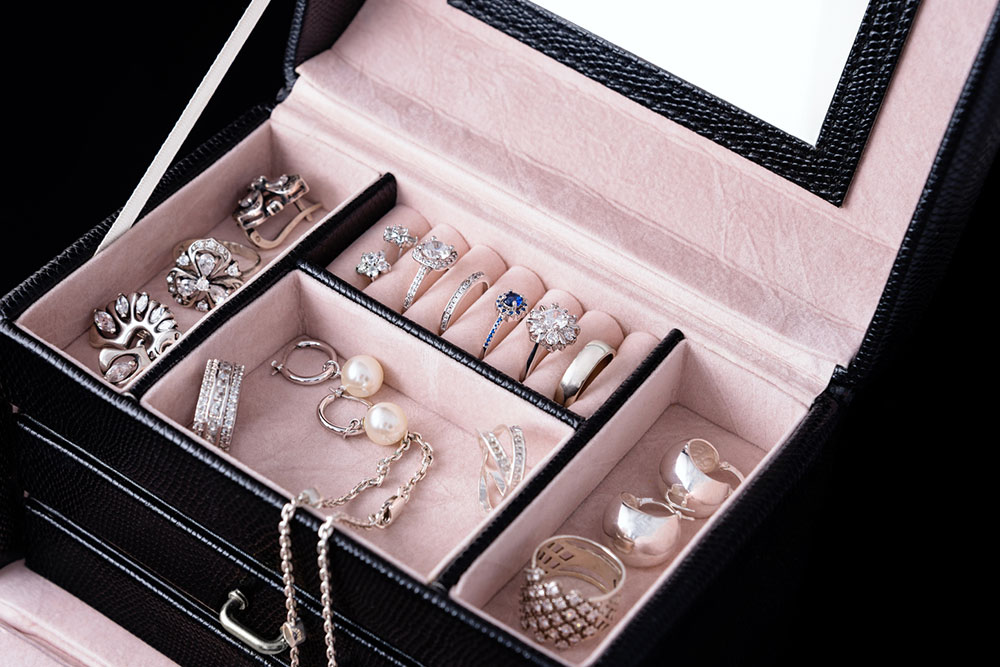Top 7 jewelry mistakes to avoid

Jewelry is much more than just an optional accessory. When tastefully used, jewelry truly enhances the overall visual appeal of an outfit, often helping complete the look. The right pieces can also help highlight individual sense of style and preferences. However, to get the most out of existing pieces and new jewelry purchases, here are a few common mistakes one should avoid making while buying, maintaining, or using these accessories:
1. Not considering the neckline
Understanding what goes with a particular neckline is just as critical for accentuating the look and appeal of jewelry as the accessories themselves. Certain clothes come with necklines that showcase tiny necklaces and chokers, while others are meant for longer neckpieces. If one wants to show off a dazzling necklace, they can opt for low-neck outfits, strapless dresses, or off-shoulder tops. Here, the neck is more exposed, letting necklaces and chains take center stage. On the other hand, a V-neckline shirt or dress goes perfectly with smaller, simpler necklaces that sit just below the collarbone.
2. Neglecting jewelry care
Dirty jewelry can be just as noticeable as unkempt clothes or broken shoes. So, people may notice lackluster pieces. At times, prolonged use of hairspray can change the appearance of everyday earrings. The product is harsh on jewelry and will lead to a buildup of film on pieces over time. This film can reduce the shine of the stones and metal. So, it is important to wear jewelry only after one is done using hairspray. Further, one should clean their jewelry from time to time. Dull jewelry can contribute to an untidy and unkempt look. So, to enhance the shelf life of their favorite pieces, one must follow the jewelry care instructions specified by the manufacturer.
3. Improper storage
Where one stores their jewelry is just as vital for its maintenance as cleaning it. How it is stored plays a role in determining its appearance and durability. Open, humid storage spaces can tarnish the jewelry. Also, too many pieces stored in the same place can rub against each other, scratching and damaging the jewelry. The best place to store jewelry is a dedicated jewelry box. These containers limit air exposure and prevent tangles and scratches. Additionally, necklace trees present a great way to keep long, dangling pieces from getting tangled and damaging other pieces. The only catch here is that one may need to clean the hanging pieces frequently to prevent dust buildup and moisture. Following the manufacturer’s instructions on storing different kinds of jewelry can help one keep their favorite pieces safe and lustrous for longer.
4. Wearing jewelry while swimming or bathing
One of the most common jewelry mistakes to avoid is excessive contact with water. Natural elements such as air, water, and humidity accelerate the wearing down of jewelry pieces. Further, if one is taking a shower with their jewelry on, some pieces can slip and fall off without realizing it. Additionally, products like body washes, soaps, and shampoos can contain harsh chemicals that corrode jewelry, making them brittle. What’s more? Constant exposure to hard water can damage jewelry over time. For these reasons, it is always advisable to take off such accessories before taking a shower or a dip in the pool. Further, if living in a humid region, one may have to practice extra caution while storing and cleaning jewelry to prevent moisture damage.
5. Wearing the same pieces every day
It is convenient to grab some favorite pieces of jewelry and wear them day in and day out. In fact, one may not want to take their jewelry off once they are home. Unfortunately, wearing the same pieces every day can do more harm than good. For starters, some pieces tend to get grimy when they are overused. Here, one may be unable to notice the grime build-up in certain spots, like the parts of earrings that are behind the earlobes. Further, certain kinds of jewelry can get more fragile when worn excessively.
6. Forgetting to coordinate metals
This can be a common mistake that somewhat lessens the visual appeal of jewelry. Mixing too many kinds of metals and finishes can lead to a confusing overall look. Multiple types of jewelry finishes in one outfit can easily look cluttered. So, one can stick to a single metal type per outfit to keep their look coherent and elegant. Alternatively, carefully mixing complementary metals can make each individual piece of jewelry piece stand out.
7. Choosing the wrong colors
Just like excessively mixing metals, wearing too many distinctively colored jewelry pieces can make the outfit seem incohesive and confusing. Further, it is important to choose jewelry that either matches or complements the clothing one is wearing. It is important to avoid putting on pieces that clash with the outfit and drive attention away from the focal point of the look. Understanding the right finishes and tones can take some amount of trial and error.
In addition to avoiding the abovementioned mistakes, one should choose jewelry that is comfortable, durable, and versatile. Opting for such reliable pieces can help one get the most out of their purchase.









